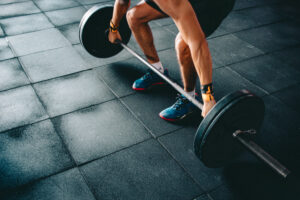Sports Injury Treatment

At Miami Spine and Performance, our chiropractic physicians do not only treat ailments of the spine but also treat a wide variety of extremity and sports injuries.
We understand the prevalence of orthopedic injuries in professional, youth and recreational athletes and the importance of conservative care options to resolve and rehabilitate these injuries. At Miami Spine and Performance, we work with several athletes throughout Aventura, Hallandale Beach and Hollywood, Florida to resolve their sports injuries and get them back to the activities they love.
Athletes we work with include:
- Runners
- Golfers
- Tennis players
- Football players
- Basketball players
- Soccer players
- Baseball players
- Jiu Jitsu athletes
- Wrestlers
- MMA fighters
- Crossfitters
- Bodybuilders
- Powerlifters
- Gym goers/weekend warriors
- Yoga Practitioners
Many athletes are aware of the “standard rules” for recovering from a sports injury; ice, rest, compression, and bracing if necessary. Most individuals don’t know that there are additional steps you can take before during and after these injuries to prevent the occurrence or reoccurrence and significantly improve the healing time.
Common sports injuries we treat include:
- Ankle sprains
- Plantar Fascitis
- Achilles Tendonitis
- Whiplash
- Neck injuries
- Herniated and bulging disc
- Spondylolisthesis
- Bursitis
- Tendonitis
- Rotator cuff injuries
- Labrum tear
- Frozen Shoulder
- Tennis Elbow
- Golfers Elbow
- Groin pulls
- Trochanteric bursitis
- Piriformis syndrome
- Hip flexor strain
- Shin splints
- Hamstring strain
- Meniscus Tear
- ACL/PCL/MCL/LCL Strain Tear rehabilitation
- Patellofemoral syndrome
- Sciatica
- Sprain/Strain injuries
- Contact injuries
- Non-contact sports injuries
Ankle Sprain
Ankles sprains are the most common non-contact sports injury amongst athletes in sports such as soccer, tennis, basketball, rugby, and football. Generally, ankle sprains occur due to an inward (inversion) rolling motion of the foot resulting in damage to the lateral ligaments of the ankle.
Poor stability of the ankle and an inability to control quick changes in direction resulting in excessive movement of the ankle are some of the risk factors that predispose an individual to a non-contact ankle sprain. At our Hallandale Beach clinic, we use specific rehabilitation exercises to strengthen the intrinsic muscles of the foot and improve the active range of motion of the ankle.
If you do suffer an ankle sprain, be sure to be evaluated by a professional that is trained in sports medicine and can offer you conservative solutions to heal and rehabilitation your injury. It is normally recommended to rest and ice until the swelling has subsided, and slowly start to integrate a gentle range of motion exercises as well as chiropractic adjustments for the foot and ankle complex.
The recurrence rate for lateral ankle sprains is as high as 80%. Therefore, it is crucial to rehabilitate the ankle even after the pain of the initial injury has subsided.
Utilizing “prehab” exercises like those linked above as well as improving your single leg balance and stability, will significantly decrease the chance of sprain recurrence.
Groin Pull (Adductor Strain)
Groin pulls, or adductor strains, are very common in jiu-jitsu athletes, sprinters, and any sports that involve kicking. Generally, these injuries can be managed conservatively and resolve relatively quickly the proper therapy. Most often, groin pulls occur at the myofascial junction of the adductor Magnus.
Active Release Technique, also known as ART, is an excellent therapy option and the preferred method of hands-on therapy at Miami Spine and Performance for those recovering from a groin pull. ART is a soft tissue technique that uses the doctor’s manual therapy skills in conjunction with patients’ movement to improve the sliding of tissues and ultimately allows for better movement and less irritation of a specific area.
In addition to using hands-on therapy, it is also essential that you regularly train your hip range of motion and strengthen the hip adductor group. The more controlled range of motion and eccentric strength your adductor muscle group has, the less likely you are to over-stretch or strain one of these muscles.
Hamstring Strain
Hamstring strains are the most common orthopedic injury that occurs in the “recreational athlete” or “weekend warrior.” This injury is generally due to the hamstring muscle contracting from an extended position resulting in pulling at the attachment around the knee. These strains do not require any invasive intervention and can be treated conservatively.
There are not a lot of preventative measures that can reduce the likelihood of a hamstring strain other than hydration, proper warm-up, etc., but there are several crucial steps that can be taken when this type of injury occurs that can decrease healing time and ensure adequate rehabilitation.
Often, individuals will strain their hamstring and elect not to see a medical professional. This is often a mistake because there are varying degrees of severity, and a movement-based medical professional such as a sports chiropractor will be able to assess the injury and put together a treatment timeline to ensure proper healing and rehabilitation of the injury. These types of conditions respond favorably to instrument assisted soft tissue therapy as well as chiropractic adjustments of the pelvis.
Anterior Shin Splints
Shin splints are a prevalent injury in running, or individuals who spent a lot of time on their feet. Generally, symptoms will present with a deep ache on the front side of the lower leg near the shin. This condition is generally caused by either weakness in the anterior musculature of the shin (tibialis anterior, extensor hallicus and digitorum longus) as well as excessive demand placed on the feet and lower leg without adequate preparation (ex. Running for the first time in years).
Though the injury is not generally very serious, it can be debilitating for individuals that develop chronic shin splints. For an acute flare-up, it is advised that you rest and put ice on the area of discomfort. Some general suggestions for individuals suffering from shin splints would be to be evaluated by a professional for biomechanical faults, look at potentially changing your shoe wear and strengthening the muscles in the front of your shin and regularly getting chiropractic adjustments on your foot and ankle if indicated.
ACL Tear
Tears of the anterior cruciate ligament of the knee are one of the most feared and well-known sports injuries to date. Unfortunately, incidents of ACL tears are common amongst youth, professional and recreational athletes.
Research shows that female athletes are two to eight times more susceptible to ACL tears than males. ACL tears are generally due to a contact injury on a hyperextension injury of the knee resulting in popping, swelling, and pain.
If you suspect you may have an ACL tear, it is important that you see a medical professional and get a thorough evaluation to determine if imaging is necessary and potentially a referral to a specialist such as an orthopedic surgeon.
Generally, if you do suffer from a full ACL tear it is recommended that you have surgery to repair the damaged ligament. The rehabilitation phase after your surgery and initial recovery is crucial in not only restoring knee stability before the injury but also making advantageous changes in your biomechanics to prevent future injury to the knee or surrounding tissues. Rehabilitation for an ACL tear and consequent surgery is a complex topic.
If you have goals of returning to competitive play in your sport, it is essential that the rehabilitation clinician that you work with not only restores range of motion, reduces swelling and improves strength but also uses proper periodization (jogging, agility, drills, practice, competition) to return you to competitive play stronger and more durable than ever.
Tennis Elbow (Lateral Epicondylitis)
Tennis elbow, also known as lateral epicondylitis, is a common injury associated with tennis as well as professions that require repetitive wrist and hand motions (hairstylists, plumbers, factory workers, etc.). It is thought that excessive wrist extension, supination and radial deviation results in slight tearing of muscles in the forearm extensor group that attach to the bony prominence on the outer aspect of the elbow resulting in pain and inflammation in the area.
Whenever you are being evaluated for a condition such as lateral epicondylitis, be sure that you are seeing a clinician trained in the Mckenzie Method of Mechanical Diagnosis and Therapy (MDT), such as our team at Miami Spine and Performance.
The reason for this is that the Mckenzie method is designed to find the source of pain in the extremities by using a specific movement-based assessment.
In our chiropractic clinic, we have found that patients presenting with symptoms of tennis elbow may have an underlying joint disorder at the elbow itself or the neck leading to similar symptoms but requiring a completely different intervention.
Prevention first!
Being physically active and playing sports regularly is one of the best ways to stay in shape and keep your body healthy, but unfortunately, injuries can be a part of being physically active.
Before participating in a sport or new physical activity regiment, be sure that you are given a thorough movement and joint assessment to make sure there is nothing that could predispose you to a more severe injury down the road, this could save you time and thousands of dollars down the road. Prevention is our first line of defense at Miami Spine and Performance, but if you do experience one of the above injuries or other sports-related injuries, please give us a call and we’d be happy to guide you through the rehabilitation process and leave you stronger and more resilient than ever!
If you or you child is currently participating in sports and suffereing from an injury or wants to prevent future injuries and optimize performance, please reach out to us by booking online below or giving us a call

